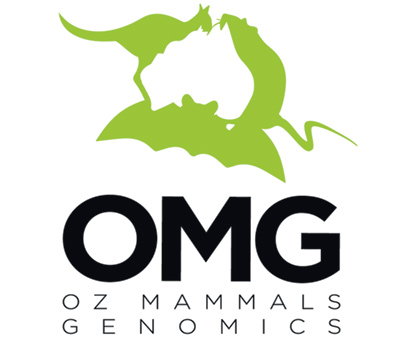Rufous hare-wallaby conservation genomics
Conservation assessment of the rufous hare-wallaby: delimiting sub- species and assessment of genetic diversity of contemporary and extinct populations to inform species management
The rufous hare-wallaby (Lagorchestes hirsutus) is a small macropodid marsupial (1.2 – 1.7 kg) that was once abundant throughout the arid and semi-arid zone of western and central Australia. Following European settlement, habitat changes and introduced predators severely impacted L. hirsutus and the species is now extinct in the wild on the Australian mainland. However, the mainland population (known as mala) survives in captivity, being established in 1980 from the last known wild population which disappeared from the Tanami Desert in 1991.
Commencing with 22 founders, the captive population now numbers several hundred individuals and is held in enclosures in NT, WA and NSW. Captive animals were also used to establish a wild population on Trimouille Island, Montebello Islands, WA in 1998.
Although now extinct in the wild on the mainland, populations of L. hirsutus persisted on two adjacent islands ~55 km off the mid-western coast of Western Australia (WA), where they were isolated from introduced predators and competitors. Each island population was described as separate subspecies in 1907 on the basis of morphological differences both from each other and from mainland specimens.
Based on a comprehensive analysis of pelage and skull morphology, Courtenay (1993) recommended that four subspecies of L. hirsutus be recognised. Lagorchestes hirsutus hirsutus from south-west Western Australia (now extinct), L. h. bernieri from Bernier Island, L. h. dorreae from Dorre Island and a currently un-named subspecies from central Australia. Although these subspecific designations have been used as a basis for management, they are yet to be tested adequately with molecular genetic data.
We are using targeted marsupial exon capture to conduct a phylogenomic analysis of contemporary and historic specimens, to assess current taxonomy of L. hirsutus and to advise on mixing the three current extant populations in future reintroductions.
We are using ddRAD sequencing to estimate genetic diversity of and differentiation among island and mainland L. hirsutus, to evaluate the effect of serial translocations on managed populations, and to assess the conservation of genetic diversity in each of the translocated populations relative to their source populations to inform their ongoing management.
Project coordinator:
- Kym Ottewell (Department of Biodiversity, Conservation and Attractions, WA)
- Mark Eldridge (Australian Museum)
Project collaborators:
- Margaret Byrne (Department of Biodiversity, Conservation and Attractions, WA)
- Anna MacDonald (Australian National University)
- Roberto Portela Miguez (Natural History Museum, London)
- Craig Moritz (Australian National University)
- Peter Spencer (Murdoch University)
